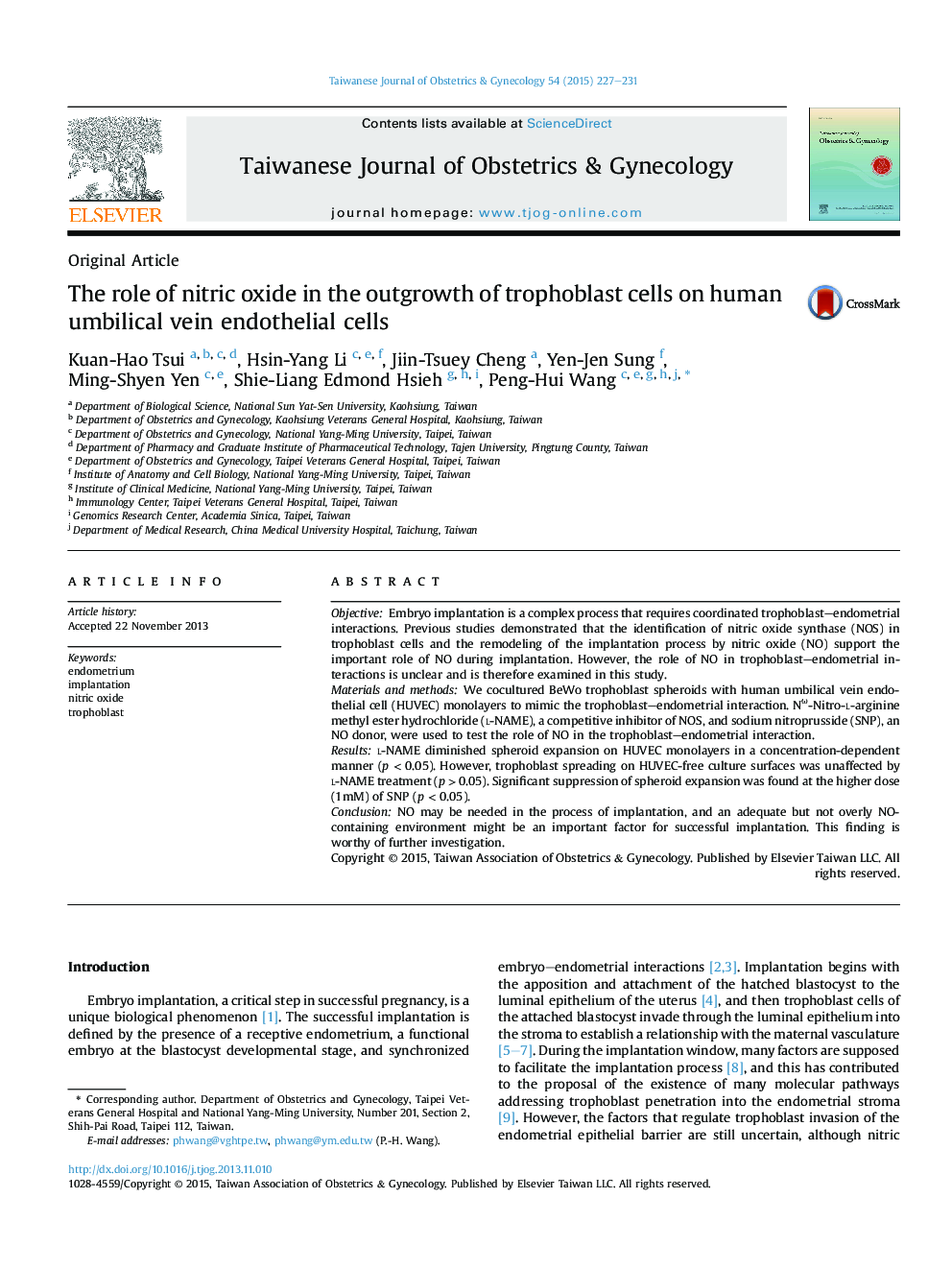| Article ID | Journal | Published Year | Pages | File Type |
|---|---|---|---|---|
| 3975084 | Taiwanese Journal of Obstetrics and Gynecology | 2015 | 5 Pages |
ObjectiveEmbryo implantation is a complex process that requires coordinated trophoblast–endometrial interactions. Previous studies demonstrated that the identification of nitric oxide synthase (NOS) in trophoblast cells and the remodeling of the implantation process by nitric oxide (NO) support the important role of NO during implantation. However, the role of NO in trophoblast–endometrial interactions is unclear and is therefore examined in this study.Materials and methodsWe cocultured BeWo trophoblast spheroids with human umbilical vein endothelial cell (HUVEC) monolayers to mimic the trophoblast–endometrial interaction. Nω-Nitro-l-arginine methyl ester hydrochloride (l-NAME), a competitive inhibitor of NOS, and sodium nitroprusside (SNP), an NO donor, were used to test the role of NO in the trophoblast–endometrial interaction.Resultsl-NAME diminished spheroid expansion on HUVEC monolayers in a concentration-dependent manner (p < 0.05). However, trophoblast spreading on HUVEC-free culture surfaces was unaffected by l-NAME treatment (p > 0.05). Significant suppression of spheroid expansion was found at the higher dose (1mM) of SNP (p < 0.05).ConclusionNO may be needed in the process of implantation, and an adequate but not overly NO-containing environment might be an important factor for successful implantation. This finding is worthy of further investigation.
